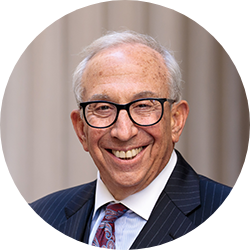Tesla Motors, the automaker known for its sporty electric vehicles, is currently under investigation for several deadly crashes caused by high-tech manufacturing design flaws.

Tesla Design Flaws Lead to Deaths
Tesla Motors is named in several wrongful death lawsuits as a result of defective automatic door handles and battery fires. Recently, the failure of Telsa’s automatic door handles in a fiery crash in Florida killed a 48-year-old anesthesiologist. Earlier this month, the man’s widow filed a wrongful death lawsuit with a personal injury lawyer against Tesla Motors and Tesla Florida Inc., the Florida distributor, for the death of her husband. Tesla Motors officials have not released comments about the crash.
Police reports show that the Florida man, Omar Awan, was driving a 2016 Tesla Model S at the time of the crash. According to police, the vehicle veered off the road, crossed three lanes of traffic, hit trees and a median, then burst into flames. After the Tesla crashed, the driver was still alive with no apparent injuries. He died from smoke inhalation. Although police officers arrived quickly to the scene, design flaws in Tesla’s automatic door handles prevented them from opening the doors. As the vehicle’s burning batteries filled the car’s cabin with heavy smoke, police officers and other bystanders watched helplessly as the Tesla became completely engulfed in flames.
The 2016 Tesla Model S has door handles that are flush with the doors to create a smooth, aesthetic line in the car’s exterior. Tesla claims the door handles on the Model S are designed for greater efficiency and more aerodynamic features. Door handles remain flush until the driver approaches the vehicle with a key fob that instigates automatic extension of the handles. Unfortunately, without the key fob, the doors can’t be opened by someone outside of the car.
According to a 2015 Consumer Reports survey, numerous problems with inoperable automatic door handles on the Tesla Model S were reported at least a year before the fatal crash in Florida. Mrs. Awan’s wrongful death lawsuit alleges that the Tesla Model S was “defective and unreasonably dangerous,” because the automatic door handles were inoperable and the car’s batteries were prone to catching fire. The lawsuit alleges that Telsa was negligent for failing to warn Mr. Awan of known design flaws with the vehicle.
The Awan case is the latest in a series of Florida personal injury lawsuits against Tesla Motors following fatal crashes. Earlier this month, a lawsuit was filed against Tesla for the death of an 18-year-old boy because of a design defect in the battery of a 2014 Model S. The boy was driving the car at high speeds when it crashed into a concrete wall, then exploded into a ball of fire. In July, a lawsuit was filed by the family of a man who died in a crash of a Tesla Model 3 when the car’s autopilot feature failed.
Tesla Safety Investigations
Due to recent fatal crashes, the National Transportation Safety Board (NTSB) is currently investigating safety problems on Tesla Models and other electric vehicles. Investigations are focused on two areas of safety – Tesla automated vehicle control systems and Tesla battery fires.
Autopilot Control Systems
Two crashes caused by problems with Tesla’s Autopilot control systems occurred in California in 2018. In one crash, a Tesla Model S SUV veered off the highway and crashed into a guardrail, killing the driver. In another crash, a Tesla Model S rear-ended a stopped fire truck when the vehicle failed to stop. Several lawsuits were filed with personal injury lawyers for injuries sustained in the crash.
Battery Fires
In addition to Florida battery fires, NTSB is investigating two California crashes involving Tesla battery fires in 2017 and 2018. In one fire, a 2014 Tesla Model S battery pack caught fire without warning and engulfed the vehicle in flames. The driver escaped safely. In a second fire, the driver lost control of the vehicle and slammed into a private residence. The vehicle exploded in flames.
NTSB crash studies show safety concerns about vehicle Autopilot control systems that contribute to distracted driving. Drivers are urged to remain alert while behind the wheel, rather than relying on Autopilot features for safety and crash prevention. Safety studies urge drivers to restrict the use of Autopilot features to lightly traveled roads and divided highways with minimal traffic. Tesla Autopilot features are advanced, so cameras and sensors allow vehicles to apply brakes, change lanes, and read road markings, but driver vigilance is still required to take over tasks that Autopilot features can’t handle.
Tesla has released reports that its electric vehicles are 10 times less likely to experience a fire than a gas-powered vehicle. However, fatal crashes caused by Tesla battery fires in the last few years raise questions about Tesla’s safety reports on flawed battery designs.






